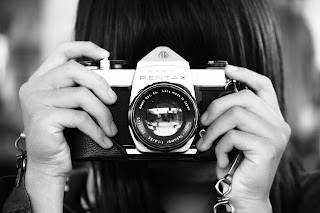 |
Deciding what pro camera to upgrade to can be a pain when you haven’t got a clue what you’re looking for. There are many factors into buying one, for example, the budget you have, what specific type of photography you need it for, and which camera will just suit you personally better. This post will go over all of this along with choosing the right lens for your type of photography.
Mirrorless or DSLR
The two most popular types of cameras currently are mirrorless cameras and DSLR cameras. Both have interchangeable lenses meaning you can swap out your lenses depending on your scenario. But the question remains which one should you choose? The main difference between the two is that DSLRs have a reflex mirror inside them, which bounces light inside the optical viewfinder. Mirrorless is self-explanatory; it has no mirror so the light goes through the lens and hits the image sensor straight away. An image preview will then show up on an electronic viewfinder or on the back of the LCD screen.
DSLR
pros
Optical viewfinder that has no chance of delay
It traditionally has a faster autofocusing system
Wider variety of lenses, at cheaper prices
Cons
They are generally really heavy and bulky
Slower continuous shooting speed
High end pro DSLR cameras are expensive
Mirrorless
Pros
The electronic viewfinder shows an accurate preview of the image you’re going to take
Have faster continuous shooting speeds
Better video quality due to greater live view autofocus and most models support 4K
Cons
A lot of mirrorless cameras don’t have viewfinders at all
Lenses are more expensive
Have a shorter battery life
Lens of choice
Choosing your lens all depends on what you're photographing. To start off with shooting portraits, I would initially use a 50mm prime. I would then move to experiment with a 35mm and 85mm prime. The cheapest option would be to buy them at f-stop 1.8. You will find as you look for lenses where the aperture opens further, for example, f1.4 or f1.2 you will be paying a lot more money. I personally use an 85mm for most of my shoots which have a great focal distance giving you that creamy shallow depth of field.
If you love shooting landscape photography, none of the lenses above are really gonna be for you, you could argue the 35mm maybe, but what you need is an even wider lens. I would recommend buying a 24mm prime f1.4 by sigma, this lens gives you a wider shot and the aperture opens enough so you aren’t putting too much stress on your ISO in darker situations. If you have a large budget you could get a two in one lens that could cover both portraits and landscapes in one hit. The 24-70mm f2.8, this lens is perfect for all scenarios when portrait and landscape photography is concerned. The only problem is the price, it comes in normally around the £1000 mark, depending on the brand. My advice is if you haven’t got that money to splash, try out the 24mm sigma, which comes in around £400 in great condition. It will give you amazingly sharp results and leave you with images you’re proud of.
Brand of camera
The brand you choose to go with can be completely personal preference. I personally use Nikon, I love the button layout and the general feel for their cameras. If I was starting out today I would definitely go with the mirrorless Sony systems. The results of cameras like the Sony Alpha a7R IV are incredible! The main reason this system is leaps ahead of others in its price bracket is for its eye and tracking autofocusing technologies. It’s a full-frame camera with 61MP and shoots 4K at 30fps. I would argue you wouldn’t find a better camera for the price, which is around £2000-2500 depending on the condition you buy it at.
If you haven’t got this high of a budget I would recommend a full-frame Nikon or Canon DSLR. Once you shop around you will find for Nikon, that the D750 is the best value for money, while for Canon the 6D mk2 is around the same price and of the same quality.
Conclusion
To conclude, I would definitely invest in a mirrorless system if you have the funds to do so. You will be investing in future technology that could give you better results if you master the cameras. Obviously, everything comes down to money if you have a large budget go mirrorless and pick up a 24-70mm f2.8
If you have a lower budget go for a DSLR with a cheaper prime lens in your preferred type of photography.



I'll take your advice and go for a low end DSLR with my first camera. I'll be using it eventually for streaming and also to create content for my YouTube channel at home. This really is excellent research. Well done!
ReplyDeleteYou have done a good job by publishing this article about photography I appreciate your efforts which you have put into this article, It is a beneficial article for us. Thanks for sharing such informative thoughts. photo editing service for photographers
ReplyDelete